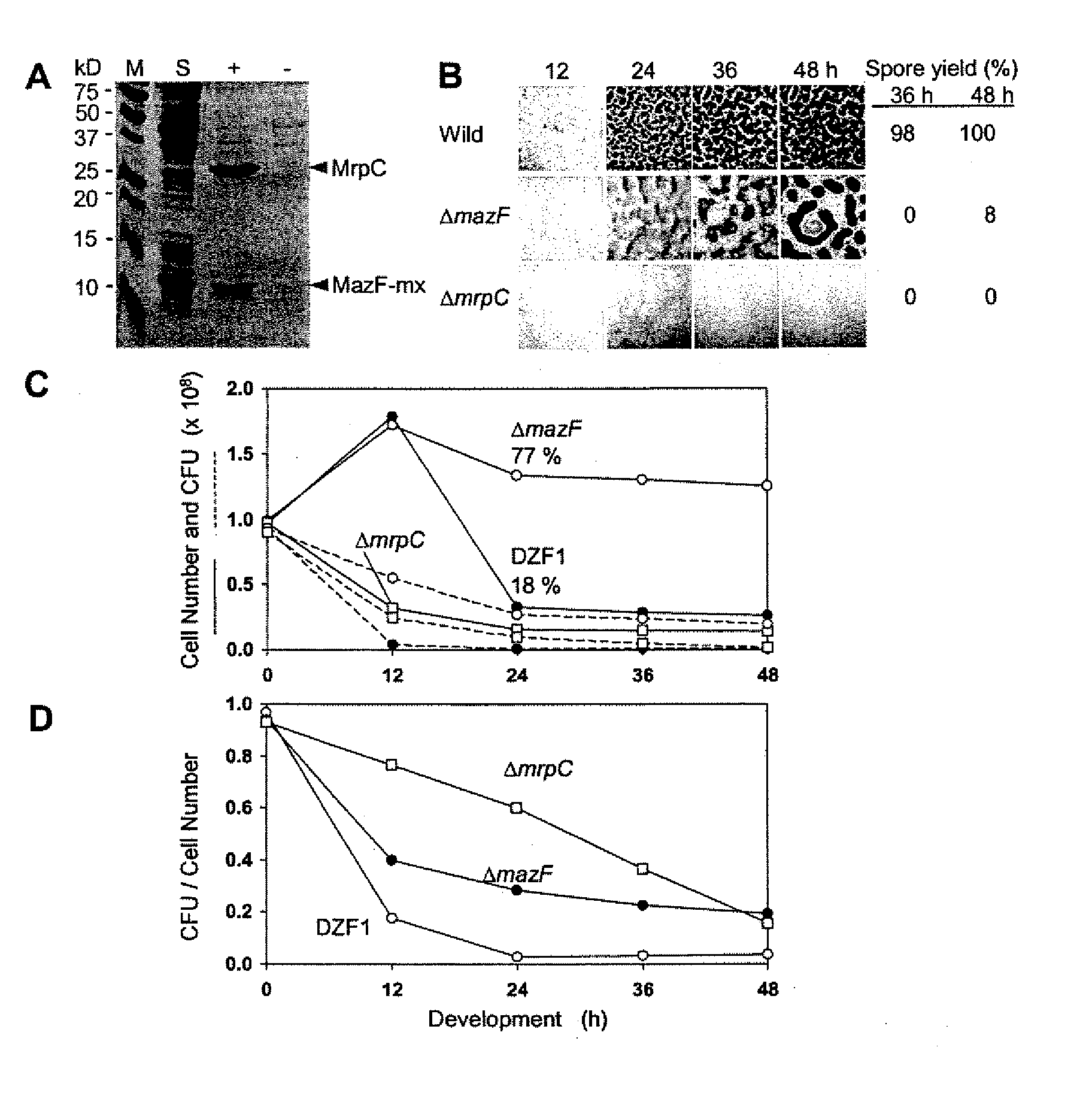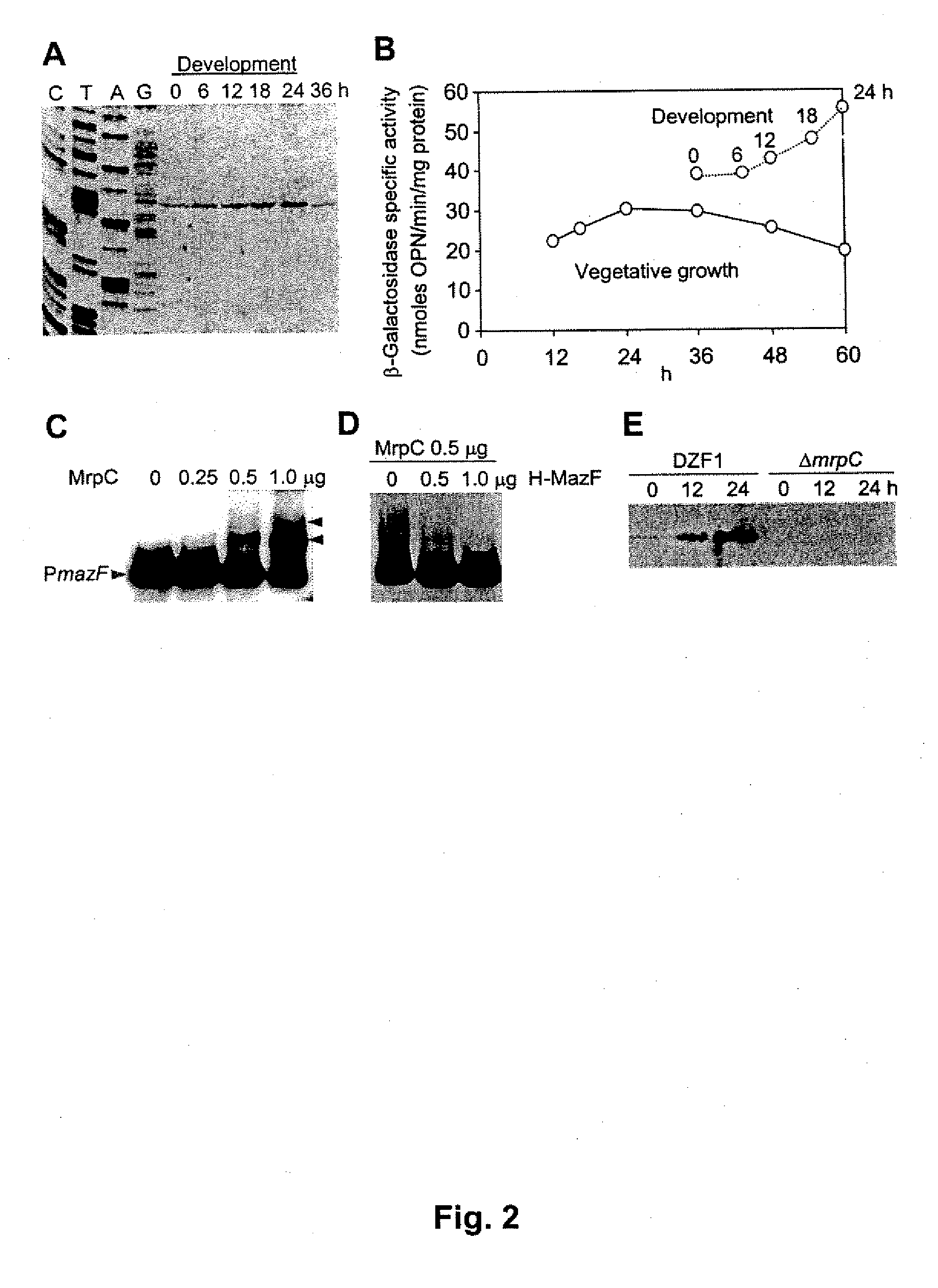MRNA Interferase from Myxococcus Xanthus
a technology of myxococcus xanthus and interferase, which is applied in the direction of bacteria peptides, chemical treatment enzyme inactivation, peptide sources, etc., can solve the problems that none of the autolysin genes are essential for developmental autolysis, and achieve spectacular multi-cellular fruiting body development, inhibit the effect of protein synthesis leading, and reduce the formation of spores
- Summary
- Abstract
- Description
- Claims
- Application Information
AI Technical Summary
Benefits of technology
Problems solved by technology
Method used
Image
Examples
examples
Materials and Methods Bacteria, Growth Conditions, Plasmid and DNA Manipulation
[0033]M. xanthus FB (DZF1) (C. E. Morrison, D. R. Zusman, J. Bacterial. 140: 1036 (1979)) and its derivatives were cultured in CYE medium at 30° C. (J. M. Campos, J. Geisselsoder, D. R. Zusman, J. Mol. Biol. 119: 167 (1978)) supplemented with 80 μg / ml kanamycin or 250 μg / ml streptomycin when necessary. To initiate fruiting body development, M. xanthus cells were spotted on CF (D. C. Hagen, A. P. Bretscher, D. Kaiser, Dev. Biol. 64: 284 (1978)) and TM agar (H. Nariya, S. Inouye, Mol. Microbial. 49: 517 (2003)) plates and spore yields were measured as described previously (M. Inouye, S. Inouye, D. R. Zusman, Proc. Natl. Acad. Sci. U.S.A. 76: 209 (1979)). Autolysis during development was measured by counting cell numbers (H. Nariya, S. Inouye, Mol. Microbial. 49: 517 (2003)). Cell viability was examined by measuring colony formation units (CFU) plating cells on CYE plates. E. coli DH5α (D. Hanahan, J. Mol. B...
PUM
| Property | Measurement | Unit |
|---|---|---|
| time | aaaaa | aaaaa |
| pKA | aaaaa | aaaaa |
| pH | aaaaa | aaaaa |
Abstract
Description
Claims
Application Information
 Login to View More
Login to View More - R&D
- Intellectual Property
- Life Sciences
- Materials
- Tech Scout
- Unparalleled Data Quality
- Higher Quality Content
- 60% Fewer Hallucinations
Browse by: Latest US Patents, China's latest patents, Technical Efficacy Thesaurus, Application Domain, Technology Topic, Popular Technical Reports.
© 2025 PatSnap. All rights reserved.Legal|Privacy policy|Modern Slavery Act Transparency Statement|Sitemap|About US| Contact US: help@patsnap.com



